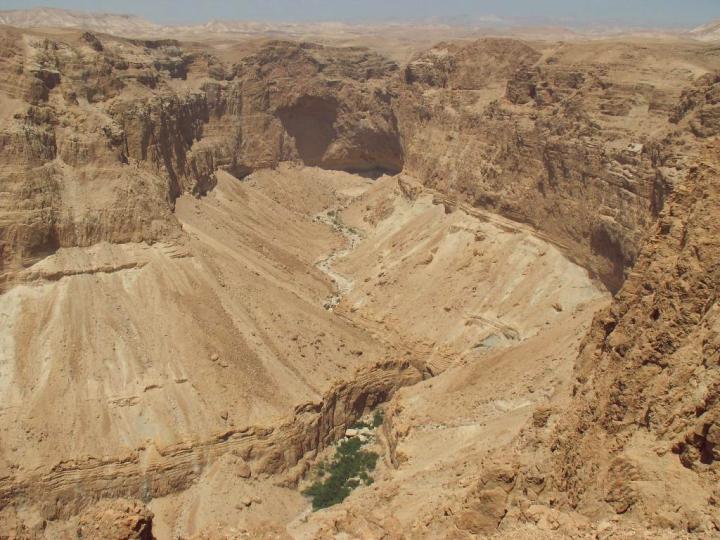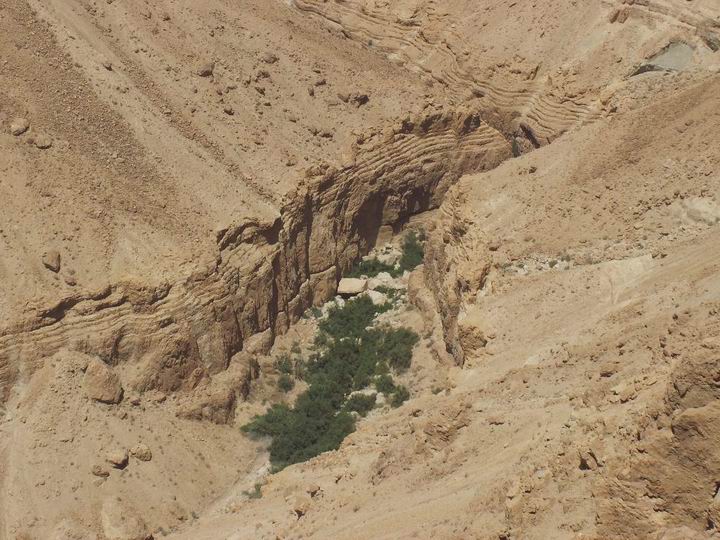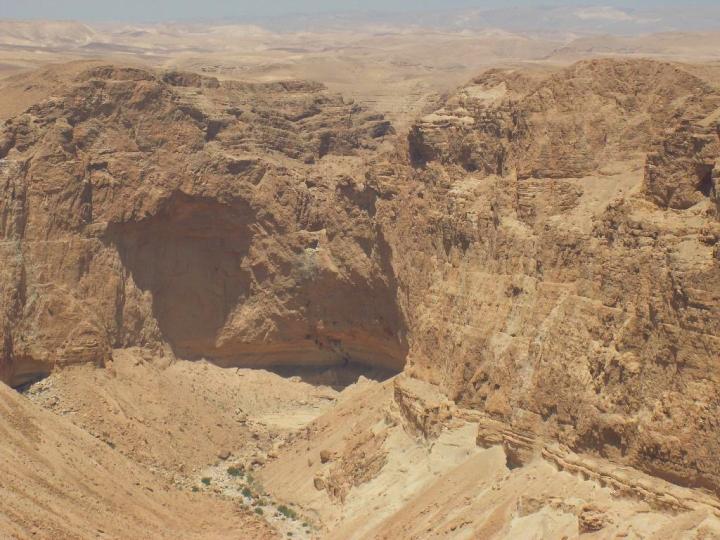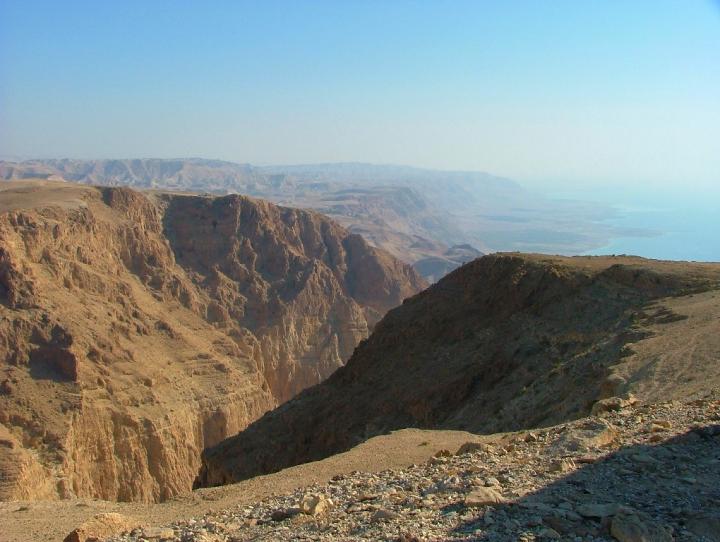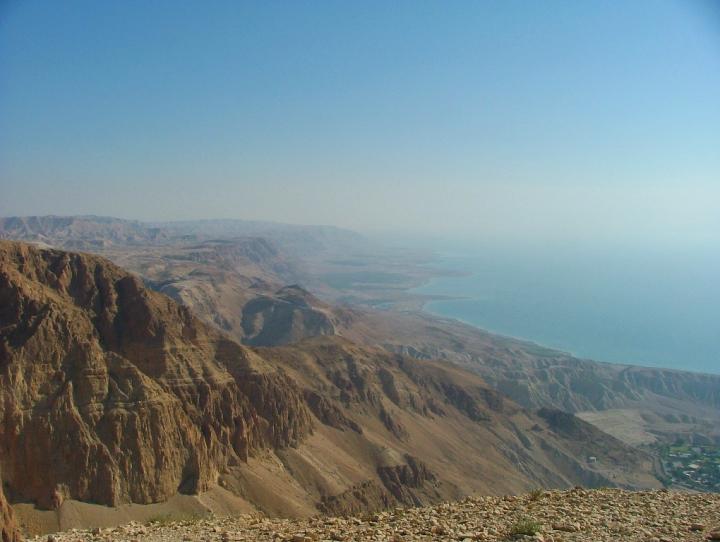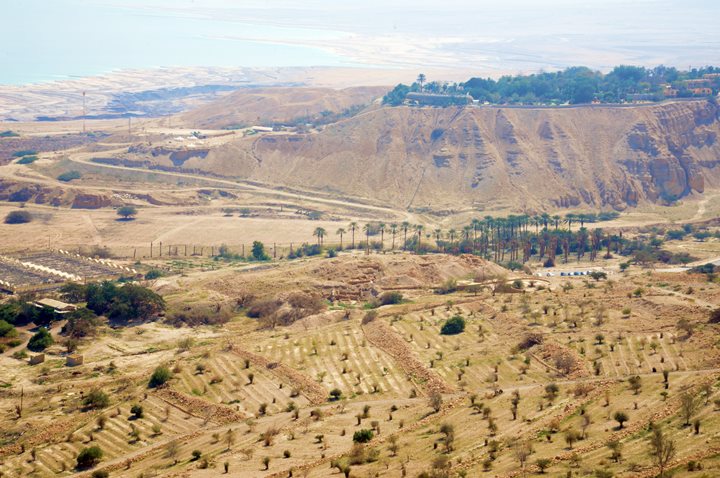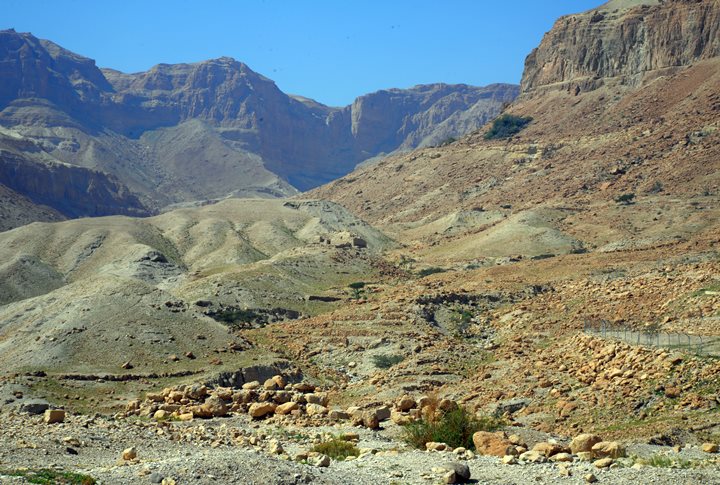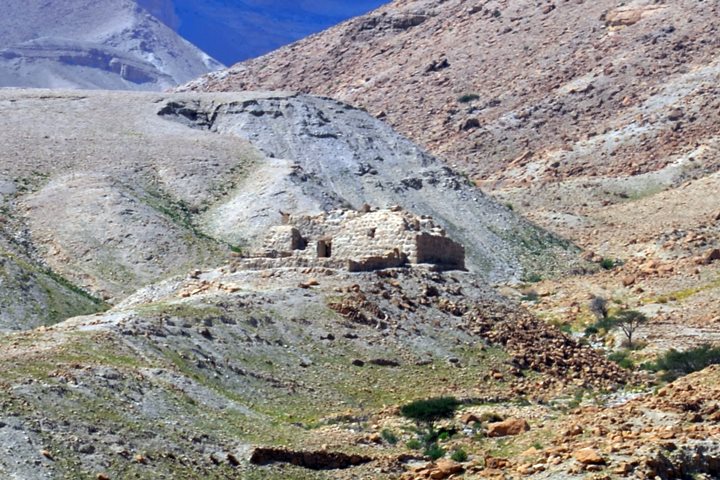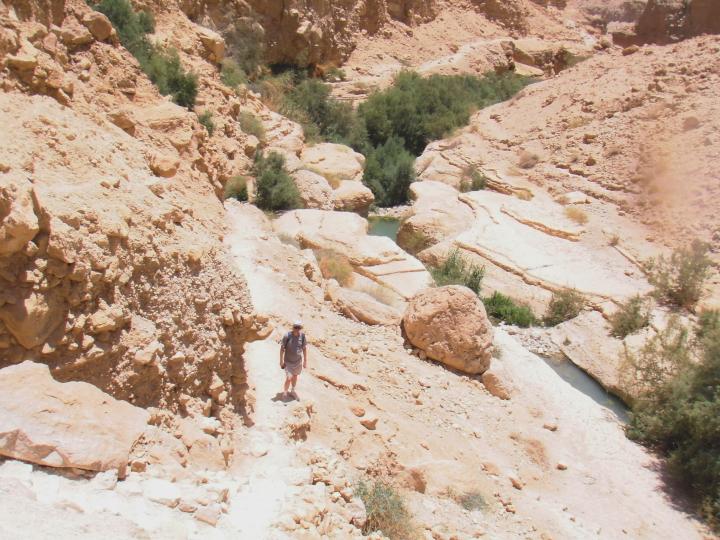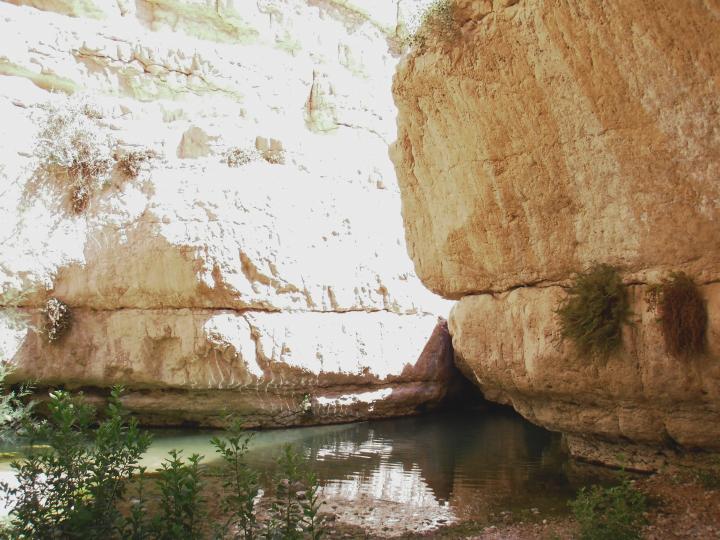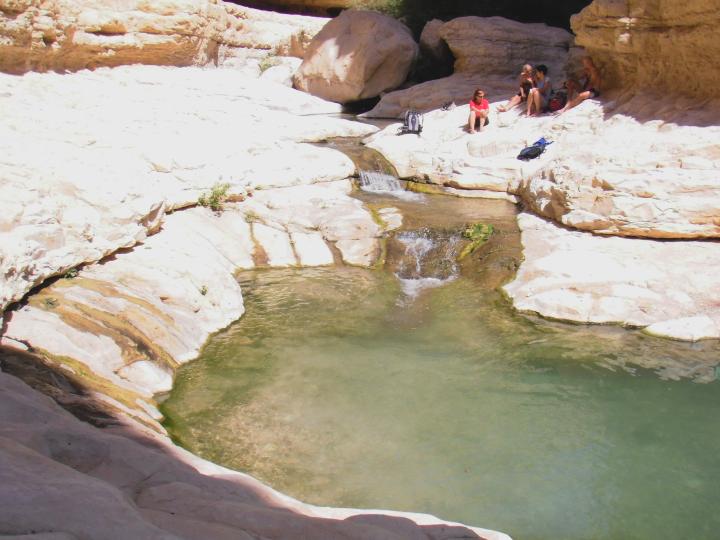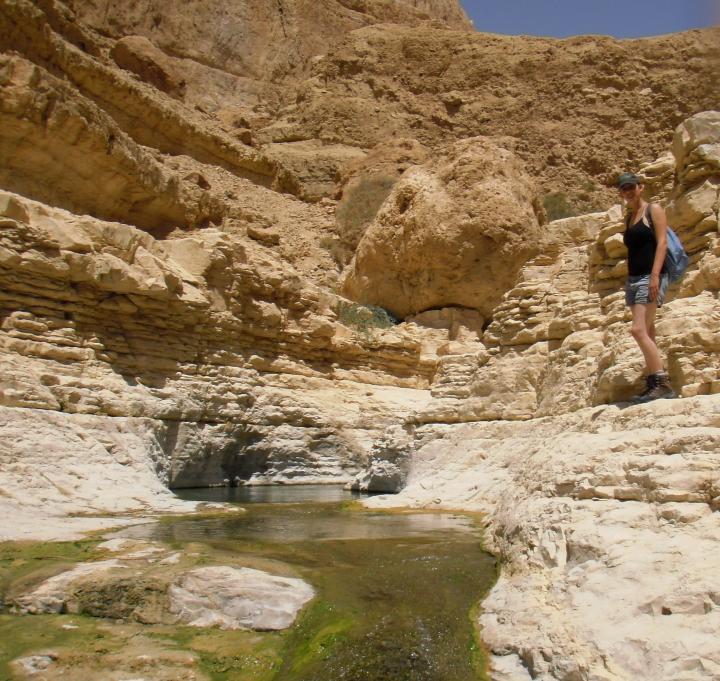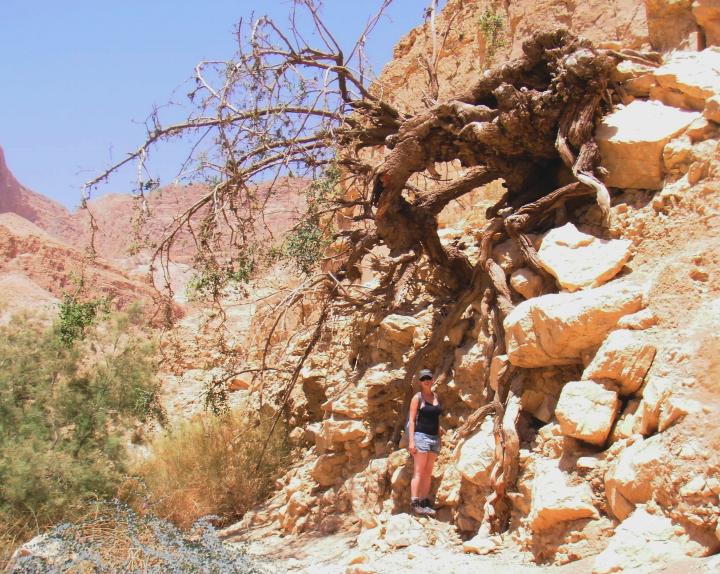Nahal-Arugot brook is a nature reserve in the Judean desert that flows to the Dead sea near Ein Gedi.
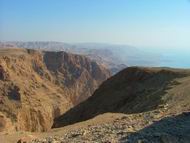
Home > Sites > Dead Sea >Nahal Arugot
Contents:
Background
Location
Photos
* West side
* East side
* Dead Sea
* Valley Entrance
* Hiking
Biblical
Etymology
Links
Overview:
Nahal Arugot brook (Wadi ‘Araja) is a nature reserve in the Judean desert. It flows to the Dead sea passing through Ein Gedi. The Hebrew name (“flower beds”) is based on the Arabic form (Wadi ‘Araja – the ascending brook).
Song of Solomon 6 2: “My beloved is gone down into his garden, to the beds of spices, to feed in the gardens, and to gather lilies”.
The brook flows on the southern side of ancient Ein-Gedi and was one of the sources of the water supply. Ein Gedi was inhabited starting from the Chalcolithic period, and a temple from that period was excavated there.
This area is where David hid from the pursuing King Saul (1 Samuel 23 29: “”And David went up from thence, and dwelt in strong holds at Engedi“).
Location:
Nahal Arugot starts in the mountains of Hebron and Gush Ezion, collecting tributaries along its length of 46km. It flows into the Dead sea, passing through Ein Gedi. This web page refers to the last section of the stream, a canyon near the Dead Sea.
An aerial map of the area is shown below, indicating the major points on interest.
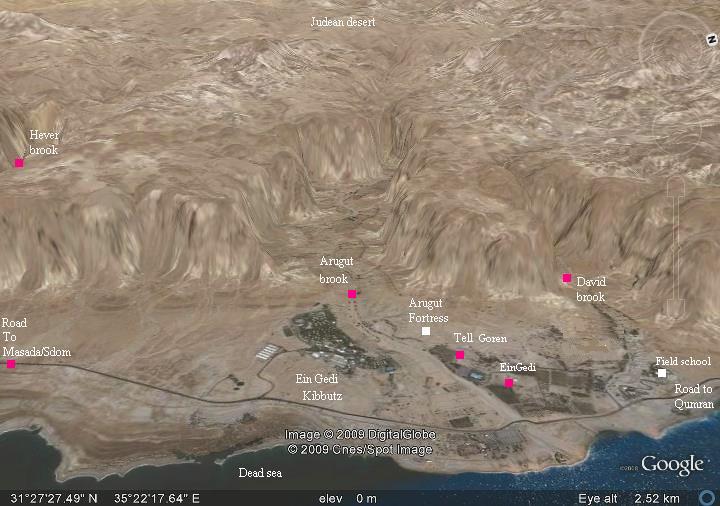
Photos:
(a) West side of Nahal Arugot
All photos in section (a-c) by Shay Shtickgold.
A view of the upper section of Nahal Arugot is seen below.
A closer view of the gorge. The canyon, 500M deep, was created by the powers of the water that rushes down the valley in the few rainy days during the winter time. Its drainage area covers 200 square KM.
Nahal Arugot is one of the few canyons in Judea desert with water all year round. It has a number of springs that provide water throughout the entire year. This was one of the sources of water to the ancient site of Ein Gedi.
Another view of the western edge of the valley is seen below.
(b) East side of the valley
The photos below show views of the eastern side of the brook. The Dead sea is seen on the far right background.
Another view of the Dead sea is seen below, with Ein Gedi on the far lower right side.
(c) Dead sea
The Dead Sea water level is retreating in recent years. One of the natural phenomenon is the recent appearance of large sinkholes, as seen in the photo below taken from the cliffs and looking down to the Dead sea.
The sinkholes are caused by the formation of underground cavities as a result of the receding salt water, combined with penetration of freshwater which dissolves the salt layers. The deadly sinkholes appear in the area around the lake, creating hazards and swallowing areas and damaging the roads.
(d) Entrance to the valley
Nahal Arugot stream flows to the Dead Sea, seen here on the upper left background. Its valley passes under the ridge where Kibbutz Ein Gedi is built.
Nahal Arugot starts from the mountains west of Ein Gedi.
A closer view shows the ruin of Arugot fort. This ancient fortress may have been a center for collecting balsam. The entrance is from the east, leading from a courtyard, and protected by a rolling stone. The walls are reinforced by a thick glacis. Inside, there are two rooms, one of which has a deep plastered basin connected to a large and deep basin located adjacent to the western exterior wall.
(e) Hiking along Nahal Arugot
All photos in this section by Tuvia & Shachar Liran.
Nahal Arugut is a popular hiking site. The hot and dry desert climate are balanced by the springs and running water along the creek. The following photos show some of the sites along the canyon of Nahal Arugot.
The trail follows the path of the canyon, as seen below. The maximum length of the trail is 7KM, starting from the parking lot of the Nature reserve of Nahal Arugot north of Kibbutz Ein-Gedi.
Along the path of the canyon you can refresh yourself by dipping into the pools.
The walk along Nahal Arugot took about 4 hours, with several stops to dip into the water such as in the pool seen in the photo below.
The photo below shows another view of the canyon, the running water, and Shachar.
During winter there are occasional flooding, and the force of the water tumble down some of the few trees along the canyon. Shachar stands below one of the uprooted trees along the canyon.
Another photo along the trail shows a hole in the dry weeds. These corners of shadow are always best for resting, hiding away from the heat of the desert.
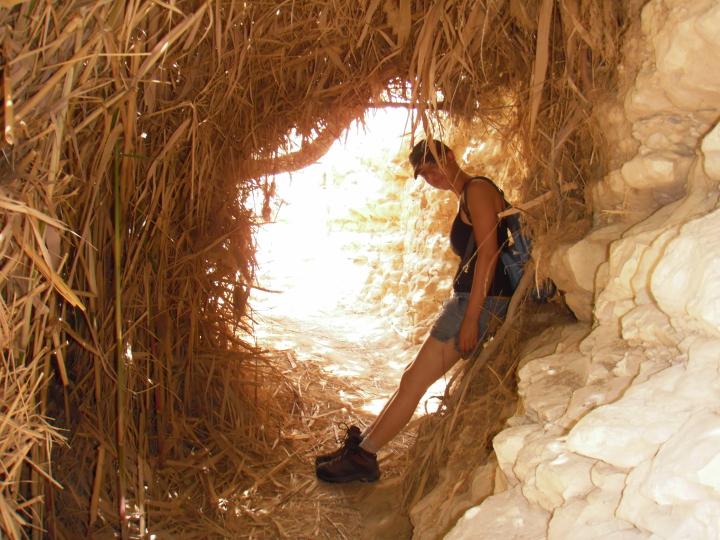
One of the highlights of the hike along the canyon is a unique and picturesque water falls, which ends in a shallow pool. It is called the “hidden falls” (“Mapal Nistar”).
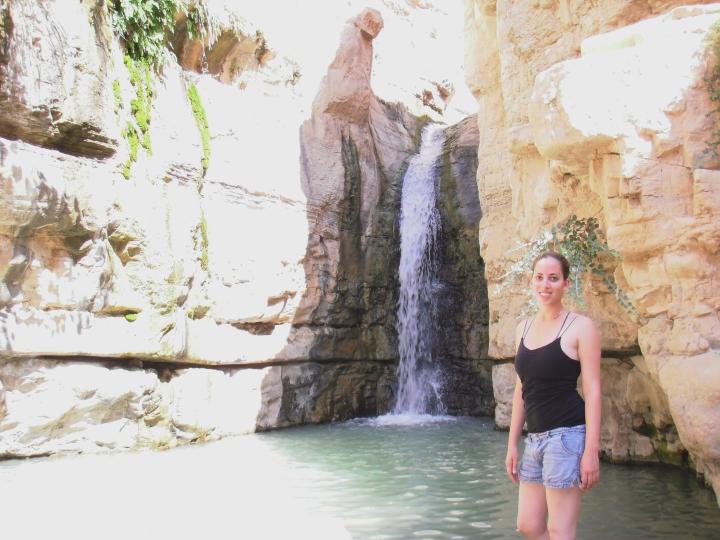
Biblical References:
(a) Song of Solomon, 6 2
The Hebrew name in this verse is “Arugot” and translated to “beds”.
“My beloved is gone down into his garden, to the beds of spices, to feed in the gardens, and to gather lilies”.
(b) 1 Samuel 23 29:
Ein-Gedi was the place where David hid while being pursued by King Saul.
“And David went up from thence, and dwelt in strong holds at Engedi”.
Etymology (behind the name):
- Nahal – Hebrew for brook or river (Wadi in Arabic).
- Arugot – In Hebrew means flowerbed. The Hebrew form is based on the Arabic name of the brook – Wadi Areijeh – which means “ascending”, since the brook ascends up to the desert .
- Wadi Areijeh – the Arabic name of Nahal Arugot (as in PEF map), meaning the “ascent valley”
- Tzemach-Ad – the initials of the 5 main brooks between Masada (in the south) and Ein Gedi (in the north) combine a Hebrew word which means “green plant” which makes it is easy to remember. The brooks are: Tseelim, Mishmar, Hever, Arugot and David.
- Ein Gedi – Hebrew: Ein-spring, Gedi – young goat. Prof Mazar suggested that Gedi is based on “Gedud” which means “many”, and translates Ein Gedi to “many springs” – based on the four springs of the site which give it life in this dry area.
Links:
- Touring Nahal Arugot (Hebrew)
BibleWalks.com – Tour the Holy Land with the Bible
Nahal Hever<<<—previous site—<<< All Sites >>>—next Dead Sea site—>>> Nahal David
This page was last updated on Aug 28, 2024 (update photos quality, new photos)
Sponsored links:
